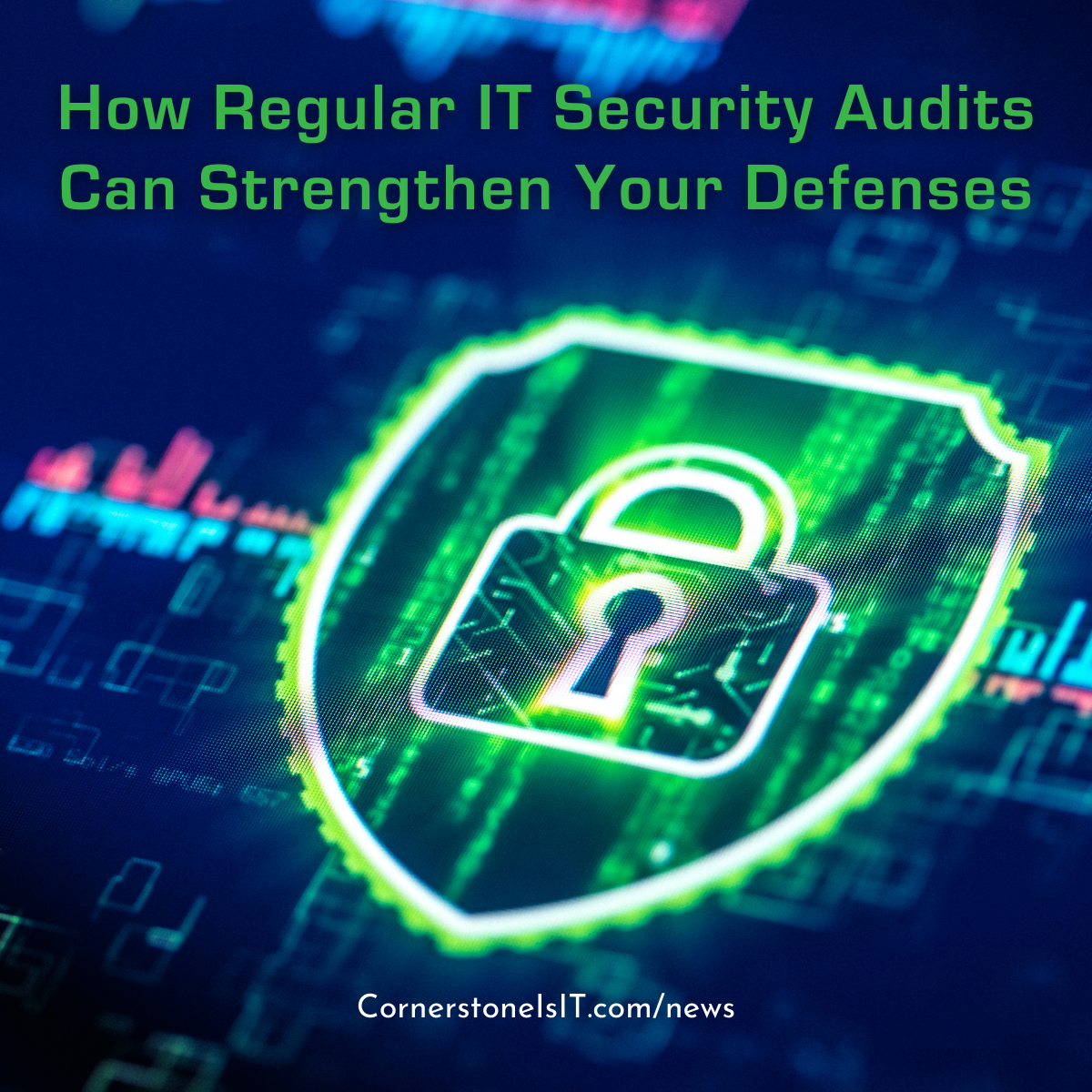
If you're managing a business, chances are your IT infrastructure is doing a lot of heavy lifting behind the scenes, such as supporting operations, handling customer data, keeping communications flowing, and helping your team stay productive. But here’s a question that doesn’t get asked often enough: When was the last time you had your IT environment checked for security gaps?
Regular IT security audits are the best way to uncover vulnerabilities in your system, ensure your defenses are solid, and support your business growth. In this blog, let’s walk through what an IT security audit actually involves and why making it a regular thing can save your business from a serious headache down the line!
What Is an IT Security Audit?
An IT security audit is a comprehensive evaluation of your organization’s IT infrastructure, policies, and practices to assess their effectiveness in protecting your data and systems. Unlike a one-time check-up, IT security audits are an ongoing process, as the cyber threat landscape is constantly evolving.
What’s the Difference Between an IT Assessment and a Security Audit?
The two sound similar, but they’re not interchangeable.
- An IT assessment takes a big-picture look at your infrastructure, such as hardware, software, network capacity, and overall system performance. It's like a general health screening.
- An IT security audit zooms in on your defenses. It asks: How easily could someone get in? What would they find? How fast could you respond?
Both have value, but for spotting risks and tightening up your cybersecurity posture, dedicated IT security audits are what you need.
Why Regular IT Security Audits Matter for Businesses
You might think your business or nonprofit is “too small” to be a target for cyberattacks, but that’s exactly why hackers often target smaller organizations. They assume these businesses and nonprofits haven’t fully secured their systems, making them prime targets.
Regular IT security audits help identify vulnerabilities before hackers can exploit them, ensuring both data and systems remain secure. Audits also help businesses comply with necessary regulations and standards, avoiding legal and financial penalties. Without regular audits, businesses risk missing potential weaknesses that could be exploited in a cyberattack.
Ultimately, regular assessments are a proactive approach to maintaining security and safeguarding the integrity of your operations.
What Does IT Security Audits Cover and What Do You Gain From It?
A good audit doesn’t just report problems. It gives you a roadmap of what’s working, what’s risky, and how to fix it. Every business is different, so no two audits look exactly the same. But a solid, end-to-end security audit will usually touch on these core areas:
- Network Security: Evaluates your configuration of firewalls, intrusion detection systems, routers, and checks for unnecessary open ports to prevent unauthorized access. It also ensures that sensitive data is encrypted both in transit and at rest.
- Endpoint Protection: Assesses your security measures in place for devices like workstations, laptops, and mobile devices, ensuring antivirus tools are current and that controls (e.g., USB port restrictions) are enforced.
- Access Management: Reviews your user permissions to confirm they are role-based and verifies the implementation of multi-factor authentication (MFA) to enhance security.
- Incident Response Procedures: Examines your organization's preparedness to detect, respond to, and recover from security incidents effectively.
- Data Protection & Backup: Checks the regularity and security of your data backups, ensuring they are stored securely (preferably off-site or in the cloud) and that recovery processes are efficient, particularly in ransomware scenarios.
- Cloud Security: Assesses the security of your cloud infrastructures, monitoring for unauthorized access, and verifying correct configuration settings.
- Compliance Checks: Ensures your adherence to industry-specific regulations such as HIPAA for healthcare, GDPR for EU customer data, or PCI-DSS for payment processing.
How Often Should You Do IT Security Audits?
This isn’t a one-and-done type of task. How often you schedule audits depends on your business, but here’s a general rule of thumb:
- At least once a year for most small to mid-sized businesses
- Every 6 months, if you handle sensitive data or are in a regulated industry
- After major changes to your IT infrastructure, such as a cloud migration, software upgrade, or office relocation
- Immediately following a cyber incident, no matter how small
Common Types of IT Security Audits
There are various forms of IT security audits designed to evaluate specific aspects of your IT systems. The type of audit depends on who is conducting it (internal or external) and the focus of the audit itself:
- Internal Audits: Carried out by the company’s in-house IT security team or internal audit staff, these audits offer a cost-effective method to continuously evaluate security measures and uncover easily addressable vulnerabilities.
- External Audits: Performed by independent third-party professionals, such as an external cybersecurity firm, which brings a more objective and unbiased perspective to the evaluation of the organization’s cybersecurity defenses.
Now, let’s dive into the other types of IT security audits that can be part of both internal and external reviews:
Vulnerability Assessments
A vulnerability assessment focuses on identifying weaknesses in your systems and networks that hackers could exploit. These assessments involve scanning for vulnerabilities, such as outdated software, missing patches, or misconfigurations, which may expose your organization to cyber threats.
Penetration Testing
Penetration testing, or pen testing, is an audit in which ethical hackers simulate real-world cyberattacks on your systems to see how well your defenses hold up. This type of audit can reveal vulnerabilities in your network or applications that other audits might miss. There are three main types of penetration tests, namely:
- Black Box Testing: The tester has no prior knowledge of the system, mimicking an outsider’s approach to finding vulnerabilities.
- White Box Testing: The tester has full knowledge of the system and its underlying infrastructure. This simulates an attack from someone with insider knowledge.
- Grey Box Testing: The tester has partial knowledge of the system, such as access to certain accounts or databases, simulating a scenario where a hacker has some internal access but not full control.
Risk Assessment Audit
A risk assessment audit takes a broader view of your organization’s security posture. It identifies potential risks, both external and internal, that could compromise your IT infrastructure. This audit focuses on identifying areas of your business where vulnerabilities exist, prioritizing them based on their potential impact, and recommending ways to mitigate or eliminate these risks.
Compliance Audits
Compliance audits are designed to identify areas where your organization may not be meeting legal requirements for handling sensitive data. For example, nonprofits handling donor information may need to verify that their customer data is encrypted or that they follow strict access control policies to ensure data privacy for nonprofits and maintain security
Information Management Audits
An information management audit assesses how well your organization manages its data. This includes reviewing data access controls, storage practices, and retention policies. With increasing concerns about data privacy, this type of audit can help you ensure that sensitive information is stored and handled securely.
Why Should You Conduct Regular IT Security Audits?
Now, you might be thinking, “We’ve got antivirus. We use strong passwords. Isn’t that enough?” Not really; and here’s why:
1. Cyber Threats Are Constantly Evolving
Hackers don’t wait for your yearly review. New vulnerabilities show up every day — from zero-day exploits to phishing scams that trick even the most cautious employees. Regular IT security audits help you stay ahead of these threats by identifying gaps before someone exploits them. For example, a configuration that worked six months ago may no longer be secure after a software update. Without a periodic IT assessment, you might not even know you’re exposed.
2. Small Errors Can Create Big Entry Points
Security breaches start with overlooked missteps. Maybe a team member shared login credentials, your cloud storage is set to “public,” or an old employee’s account is still active. These little things can open the door to a breach. Regular IT security audits catch the stuff that slips through the cracks during day-to-day operations.
3. You Need to Know Where You Stand
Regular IT security audits give you a clear view of your cybersecurity posture. For instance, where you’re strong, where you’re not, and what needs to be fixed. Without it, you’re essentially guessing. And when clients, partners, or regulators come asking about your security practices, you want to be able to answer confidently.
5 Best Practices in Conducting Regular IT Security Audits
Conducting regular IT security audits helps maintain a strong cybersecurity posture and protect your IT infrastructure. Here are five best practices to optimize the process:
- Define Clear Objectives: Set specific goals for the audit, whether assessing vulnerabilities, compliance, or system performance. Align audits with an IT assessment to evaluate both security and infrastructure..
- Update Security Policies: Review and update security policies regularly to reflect changes in your IT infrastructure and industry best practices.
- Prioritize Critical Assets: Focus audit efforts on protecting sensitive data, intellectual property, and critical infrastructure, which pose the highest risk.
- Use Both Internal and External Auditors: Combine internal teams’ insights with external auditors’ unbiased perspectives for a comprehensive evaluation of your cybersecurity posture.
- Train Employees on Security Awareness: Evaluate the effectiveness of your cybersecurity awareness training, ensuring employees can recognize phishing attempts, report suspicious activities, and that security training is integrated into onboarding processes.
Ready to Get Your IT Security Audit Started? Reach Out to Cornerstone Technologies Today!
While it’s possible to conduct internal IT assessments, partnering with experienced external professionals is highly recommended. Experts can provide an objective perspective on your security measures and identify risks you may have missed. They can also offer specialized tools and techniques to evaluate your IT infrastructure thoroughly.
At Cornerstone Technologies, we take a hands-on approach with our managed IT services. We don’t just flag issues; we help you solve them, so your IT systems are actually safer and stronger post-audit. Contact us today to get a detailed IT security audit and assessment tailored to the unique needs of your business!


Leave Your Comment Here